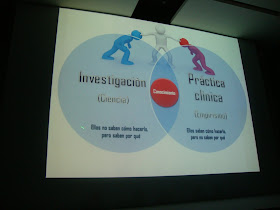For more information CLICK HERE
October 27, 2016
October 20, 2016
A new system for classifying root and root canal morphology
New Root Canal Classification System from Prof Dr. Marco Versiani
To read the article or download this Power Point presentation CLICK HERE
October 17, 2016
September 23, 2016
September 18, 2016
European Society of Endodontology
More information on the link:
Prof. Dr. Marco Versiani
New trends in dentinal crack research: the Walking Dead Project
Dentinal microcracks in endodontics
Date and Time: Saturday, 16 September 2017 11:30
Location: Saturday 16th Hall 4
Prof. Dr. Marco Versiani
Update on root canal anatomy in a 3D world
Root canal anatomy
Date and Time: Thursday, 14 September 2017 15:00
Location: Thursday 14th Hall 2
September 16, 2016
Publication: Journal of Endodontics
Adjunctive steps for disinfection of the mandibular molar root canal system: a correlative bacteriologic, micro-computed tomographic and cryopulverization approaches
Flávio R.F. Alves, Carlos V. Andrade-Junior, Marília F. Marceliano-Alves, Alejandro R. Pérez, Isabela N. Rôças, Marco A. Versiani, Manoel D. Sousa-Neto, José C. Provenzano, José F. Siqueira Jr.
Abstract
Introduction
This study evaluated the disinfecting ability of chemomechanical preparation with rotary nickel-titanium instruments, followed by 2 distinct adjunctive procedures in the root canals of extracted mandibular molars by means of a correlative analytical approach.
Methods
Twenty-two extracted mandibular molars were selected and anatomically matched between groups on the basis of micro–computed tomographic analysis. In the first phase of the experiment, root canals were contaminated with Enterococcus faecalis and subjected to chemomechanical preparation with BT RaCe instruments and 2.5% NaOCl irrigation. Then either XP-Endo Finisher instrument or passive ultrasonic irrigation was used to supplement disinfection. Micro–computed tomography was used to show whether the percentage of unprepared areas correlated to bacterial counts. In the second phase, the same teeth were contaminated once again, and the adjunctive procedures were used. Samples from the isthmus area of mesial roots and the apical 5-mm fragment of distal roots were obtained by cryopulverization. Samples taken before and after treatment steps in both phases were evaluated by quantitative polymerase chain reaction and statistically analyzed.
Results
In phase 1, preparation in both groups resulted in substantial decrease of bacterial counts (P < .001). The adjunctive approaches led to a further small bacterial reduction, which was significant for XP-Endo Finisher (P < .05). No significant differences were observed between groups for persisting bacterial counts. Correlative analysis revealed no statistically significant relationship between bacterial reduction and the percentage of unprepared areas (P > .05). In phase 2, both methods had significant antibacterial effects in the main canal, but none of them could predictably disinfect the isthmus/recess areas.
Conclusions
Both XP-Endo Finisher and passive ultrasonic irrigation exhibited antibacterial effectiveness, but only the former caused a significant reduction in the bacterial counts after chemomechanical preparation. None of them were effective in predictably disinfecting the isthmus/recess areas.
September 14, 2016
Publication: Journal of Endodontics
Keleş A, Alçin H, Sousa-Neto MD, Versiani MA. Supplementary Steps for Removing Hard Tissue Debris from Isthmus-containing Canal Systems. J Endod. 2016. doi: 10.1016/j.joen.2016.07.025.





































































